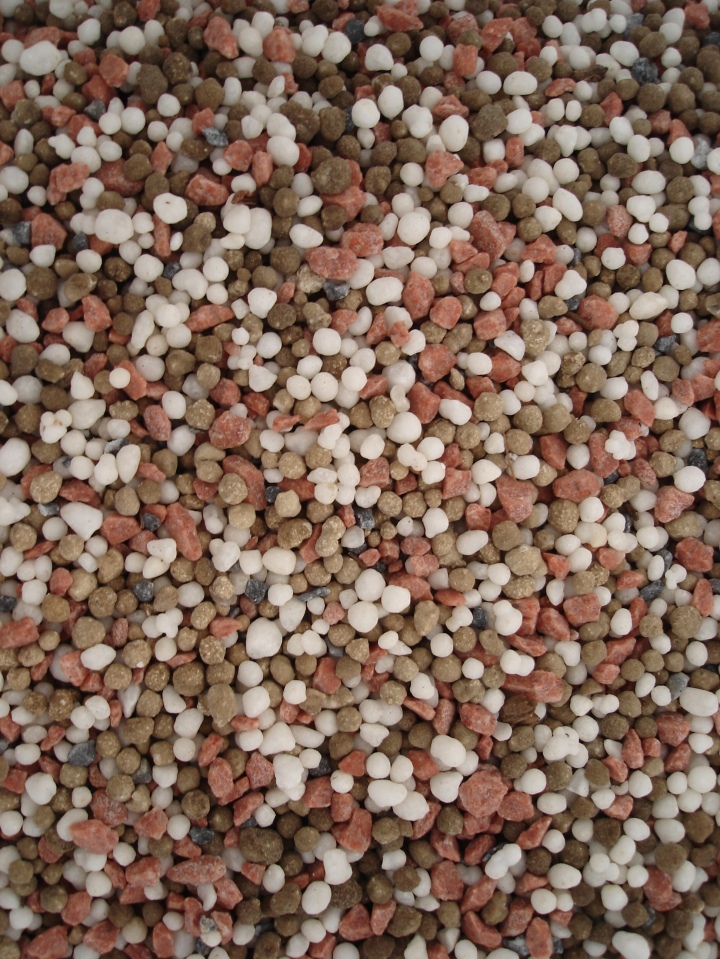 Too much of a good thing can be a problem. That is why bacon is not one of the four basic food groups. It is why sunny weather gets mixed with a bit of rain. It is why we can not give plants too much fertilizer. Since late last summer or autumn, there has not been much need for fertilizer. If fertilized too late, citrus and bougainvillea develop new growth just in time to be damaged by frost.
Too much of a good thing can be a problem. That is why bacon is not one of the four basic food groups. It is why sunny weather gets mixed with a bit of rain. It is why we can not give plants too much fertilizer. Since late last summer or autumn, there has not been much need for fertilizer. If fertilized too late, citrus and bougainvillea develop new growth just in time to be damaged by frost.
Now it is time to start applying fertilizer, but only if necessary or advantageous. Fertilizer really is not as important as the creative marketing of fertilizers suggests. It is useful for new plants, fruits, flowers, lawns and especially for vegetables, but is probably overkill for healthy and established plants. There is no need to promote growth of trees and shrubbery that are at their optimum size.
Some of the specialty fertilizers are a bit fancier than they need to be. With few exceptions, complete fertilizers are useful for most applications. As long as plants get the extra nutrients that they crave, they should not complain. They can not read the labels of the fertilizers that they receive. Plants are more likely to have problems if they get too much of something that they do not need.
Rhododendrons and azaleas might like specialty acidifying fertilizer, but should be satisfied with a complete fertilizer. Citrus might likewise appreciate fertilizer that is specially formulate for citrus, but are probably not too discriminating. Palms only want specialty palm fertilizer if they demonstrate symptoms of nutrient deficiency. (Some palms are sensitive to deficiencies of micro nutrients.)
Too much fertilizer, especially fertilizer with a good amount of nitrogen, can inhibit bloom of several plants. Bougainvillea puts more effort into vigorous shoots and foliage than into bloom if it gets strung out on nitrogen. Nasturtium will do the same. In pots and poorly drained locations, excessive fertilizer can become toxic enough to discolor foliage or even scorch the edges of large leaves.
The most justifiable uses for fertilizers now are for flowering annuals and vegetable plants. Tomato and corn plants respond very favorably to fertilizer because they are so greedy with the nutrients they require for their unnaturally abundant production. (In the wild, the ancestors of tomato and corn do not really produce like garden varieties do.) Flowers, of course, take a lot of resources too.
Excellent advice. I have always given my roses fish, blood and bone after the main flush of flowering, but am wondering if I really need to do this, or if it just washes away. Any thoughts?
LikeLiked by 2 people
They all wash away eventually, but if you get another good bloom phase, it would be worth it. I think that fish emulsion in particular is a good fertilizer. Slow release fertilizer might work better, but is more expensive and is not organic.
LikeLiked by 2 people
Great, useful article, Tony! I am not a horticulturist, but agree that fertilizers are over-marketed, as are many other things these days. Thanks!
LikeLiked by 2 people
That is a good way of saying it, “over-marketed”. I have nothing against them, but they are so often excessive.
LikeLiked by 1 person
Oh no, all this time I’ve thought bacon was one of the 4 basic food groups. 🤪
LikeLiked by 2 people
It probably should be.
LikeLiked by 2 people
I find that Bougainvillea thrives on neglect. As you say, fertilzer only seems to increase the stems and leaves, not the beautiful bracts!
LikeLiked by 2 people
Unfortunately, when a healthy bougainvillea lacks bloom, the common response is to give it more fertilizer.
LikeLiked by 2 people
I recently read about fertilizer being a main factor in the so-called green revolution that kept and continues to keep millions of people from starving.
LikeLiked by 2 people
Yes, and it makes it possible to grow many food crops in soil that they would otherwise be so productive in; but it must still be used responsibly.
LikeLiked by 1 person
Excellent article and advise, Tony.
LikeLiked by 2 people
Thank you.
LikeLiked by 1 person